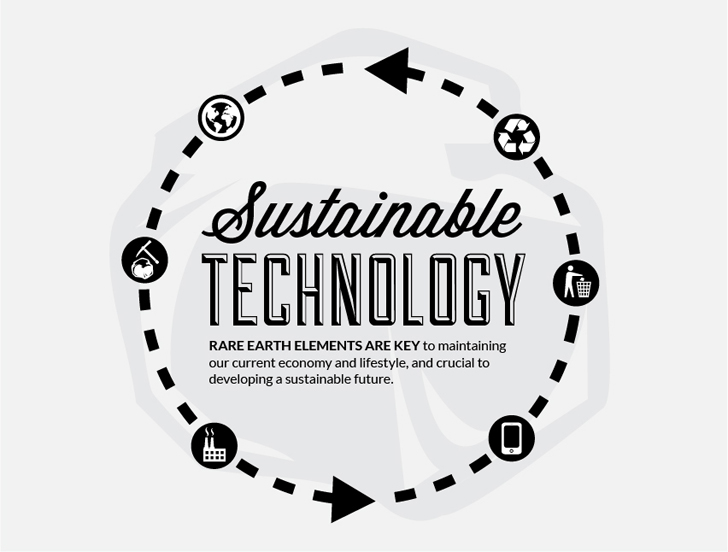Design and Technology

(Picture from Rare Earth Elements Infographics [3]Link opens in a new window)
Rapid global industrialisation and population growth are placing increasing pressure on availability of raw materials. A group of elements known as the Rare Earth Metals have become a highly sought-after resource for high-technology and low carbon industries. Currently, global demand is increasing, and there are concerns over future availability [1]Link opens in a new window.
Manufacture of low carbon technologies is seen as a key area of future growth for the UK. It is generally accepted that a consistent supply of raw materials is important for this growth, and concerted effort to develop a strategy to secure resources is needed. Two key areas which are likely to contribute to increased UK demand for rare earths are wind turbine and electric vehicle manufacture. However, Renewable UK, a leading renewable energy trade association, reports that no wind turbine manufacturers have expressed concerns about rare earth availability to them. Similarly no manufacturers operating in the UK have approached the Office for Low Emission Vehicles expressing concern. This reflects the fact that downstream goods are not covered at present by export restrictions [1]Link opens in a new window.
Many applications of rare earths result in very low concentrations in scrap, making recycling difficult and expensive. The recycling potential is greater in devices that use more material (e.g. those containing magnets). Despite the potential that recycling offers, many products are not designed to allow recovery of high value components easily at end-of-life. Some suggest that manufacturers have limited incentives to work towards this with existing design and assembly processes. However, government policy is based upon raising awareness of the need for this. Japan leads the way in research into rare earth recycling, with Hitachi aiming to recycle electric motor magnets by 2013. There is relatively little activity elsewhere. Defra say that re-use (for example reusing magnets from speakers) is also important [1]Link opens in a new window. Therefore, REE resource management, sustainable productoin, and technological development are the keys issues surrounding REE.
Rare Earth Elements Education Resources for Design and Technology
MIT Podcast- ‘Rare Earths for the Common People’
Environmental Justice Atlas- ‘Lynas Refinery in Kuantan, Malaysia’
The Guardian- ‘Dirty, dangerous and destructive – the elements of a technology boom’
University of Birmingham- ‘How can we secure a responsible supply of critical materials for the 21st century economy?’

Here, we summuarized education resources for teaching Rare Earth Elements in the Design and Technology course in the following examboards:
Assessment and Qualifcations Alliance (AQA)
Design and Technology: Product Design (7552)
3.2.8 Responsible design, Environmental issues, and conservation of energy and resources
EDEXCEL
Design and Technology (2017)
Topic 6 Effects of technological developments
Topic 9 Designing for maintenance and the cleaner environment
Oxford, Cambridge and RSA Examinations (OCR)
Design and Technology (H404, H405 and H406)
3. Implications of wider issues (Page 39)
3.1 What factors need to be considered when designing and manufacturing products to overcome possible conflicts between moral and commercial factors?
3.2 What factors need to be considered when developing design solutions for manufacture?
International Baccalaureate (IB)
Design Technology
Topic: Resource management and sustainable production
For Further Curriculum information, please visit the following examboard website.
Assessment and Qualifcations Alliance (AQA)
https://www.aqa.org.uk/
EDEXCEL
https://qualifications.pearson.com/en/home.html
Oxford, Cambridge and RSA Examinations (OCR)
https://ocr.org.uk/
International Baccalaureate (IB)
https://www.ibo.org/
